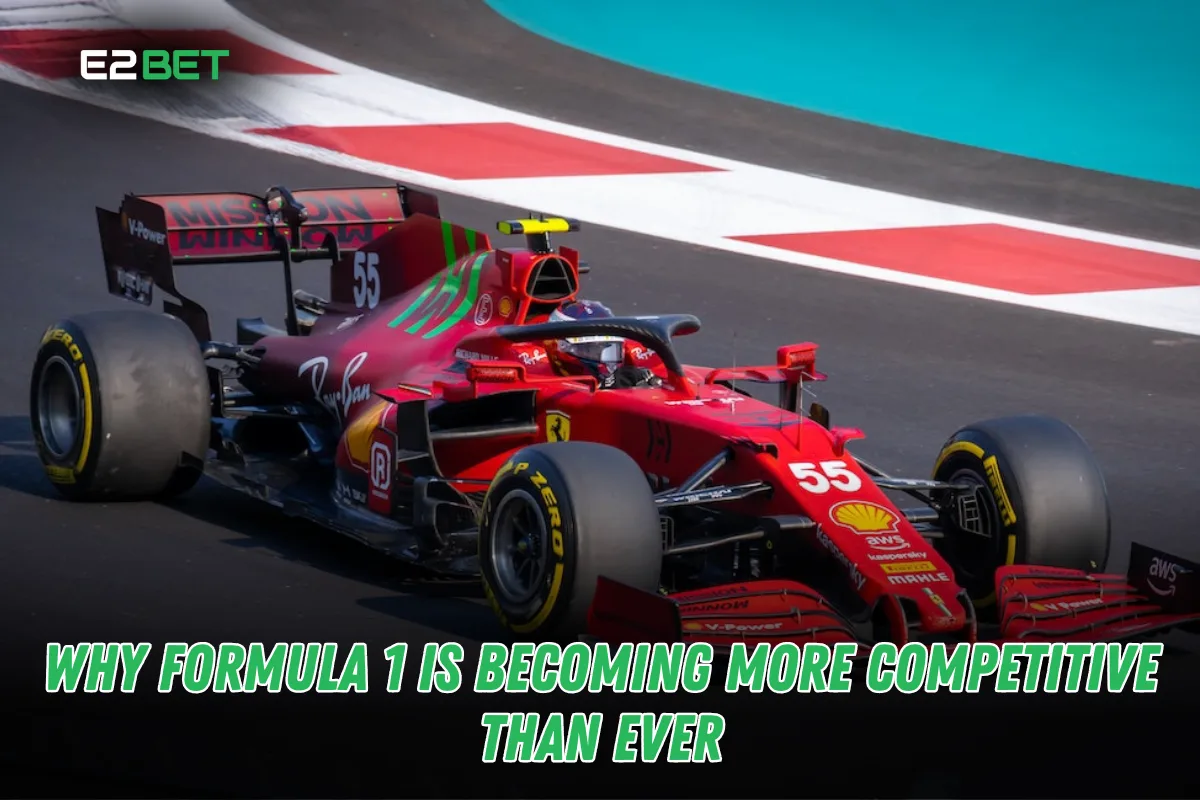Formula 1 (F1) has always been at the pinnacle of motorsport, combining speed, technology, and human skill. Over the years, the sport has evolved significantly, with changes in regulations, advancements in car technology, and new talented drivers shaking up the competition. Today, F1 is more competitive than ever, with tighter battles, unpredictable races, and a more level playing field among teams.
Evolution of Regulations and Their Impact
1.1 New Technical Regulations
One of the biggest reasons for increased competition in F1 is the introduction of new technical regulations. Changes in car aerodynamics, power unit performance, and weight distribution have significantly altered how teams design their cars. The FIA has implemented these regulations to reduce the gap between top and midfield teams, resulting in more closely fought races.
1.2 Budget Cap and Financial Fair Play
The introduction of a budget cap has been a game-changer for F1. Previously, top teams like Mercedes, Red Bull, and Ferrari had massive budgets, making it nearly impossible for smaller teams to compete. With financial restrictions in place, teams must now manage resources efficiently, leading to a more even competition across the grid.
Advancements in Car Technology
2.1 Improvements in Engine Performance
Hybrid engine technology has improved significantly, with teams finding ways to extract more power while maintaining fuel efficiency. The difference in engine performance between manufacturers like Mercedes, Ferrari, and Honda has narrowed, making races more unpredictable and exciting.
2.2 Aerodynamics and Downforce Optimization
Teams have invested heavily in aerodynamics research, focusing on downforce optimization to improve cornering speed and overtaking ability. These developments allow cars to follow each other more closely, leading to intense on-track battles.

Rise of Young and Talented Drivers
3.1 Young Drivers Making an Impact
In recent years, a new generation of young drivers has emerged, bringing fresh energy and fierce competition. Talents like Max Verstappen, Lando Norris, Charles Leclerc, and George Russell have challenged veteran drivers, pushing the limits of competition.
3.2 More Competitive Midfield Teams
Midfield teams like McLaren, Alpine, and Aston Martin have stepped up their game, regularly challenging the top teams. This has led to a more dynamic grid where race outcomes are less predictable.
More Strategic and Tactical Races
4.1 Tire Strategies and Pit Stops
Tire management has become a crucial aspect of race strategy. Teams must carefully plan pit stops and tire choices to maximize performance. With multiple strategies at play, races are now won or lost based on split-second decisions.
4.2 Use of Data and AI in Race Strategy
F1 teams heavily rely on data analytics and artificial intelligence to make strategic decisions. AI-driven simulations help teams predict race outcomes and adjust tactics in real time, making races more competitive and engaging.
Closer Battles and More Exciting Races
5.1 More Frequent Overtaking
With advancements in aerodynamics and the introduction of Drag Reduction System (DRS), overtaking has become more frequent. Fans now witness thrilling wheel-to-wheel battles throughout the race, keeping the excitement alive.
5.2 Increased Rivalries Between Drivers and Teams
F1 has seen some intense rivalries in recent years, such as Hamilton vs. Verstappen and Leclerc vs. Norris. These rivalries create dramatic moments and add to the unpredictability of the championship.
Impact of Fan Engagement and Global Expansion
6.1 Growth of F1 Popularity Worldwide
Formula 1 has gained immense popularity globally, thanks to initiatives like Netflix’s “Drive to Survive.” The series has brought a new wave of fans, increasing viewership and engagement across different markets.
6.2 More Sponsors and Investment in Teams
With growing fan interest, more sponsors have entered the sport, providing teams with additional financial backing. This investment allows teams to develop competitive cars, further increasing competition on the grid.
The Future of F1 Competitiveness
Looking ahead, Formula 1 will continue to evolve, with more rule changes aimed at making races even more competitive. Upcoming regulations, sustainability initiatives, and technological advancements will shape the next era of F1, ensuring that the sport remains thrilling for fans worldwide.
Conclusion
Formula 1 is experiencing one of its most competitive eras, thanks to regulatory changes, technological advancements, and the rise of young talent. The combination of strategic battles, thrilling overtakes, and increased global engagement has made F1 more exciting than ever. As the sport continues to evolve, fans can expect even closer racing and more unpredictable championship battles in the future.
FAQs
Q1. Why has F1 become more competitive in recent years?
Ans. F1 has become more competitive due to new regulations, budget caps, advancements in technology, and the rise of young, talented drivers.
Q2. How does the budget cap impact the competitiveness of F1 teams?
Ans. The budget cap limits excessive spending by top teams, allowing smaller teams to compete on a more level playing field.
Q3. Which young drivers are shaping the future of Formula 1?
Ans. Drivers like Max Verstappen, Lando Norris, Charles Leclerc, and George Russell are leading the next generation of F1 racing.
Q4. How does technology influence race strategies in F1?
Ans. Teams use data analytics, AI, and real-time simulations to make strategic decisions, optimizing tire strategies and pit stops.
Q5. What role does fan engagement play in the increasing competitiveness of F1?
Ans. Fan engagement through social media, sponsorships, and global expansion has increased investments in teams, leading to improved performance and tighter competition.